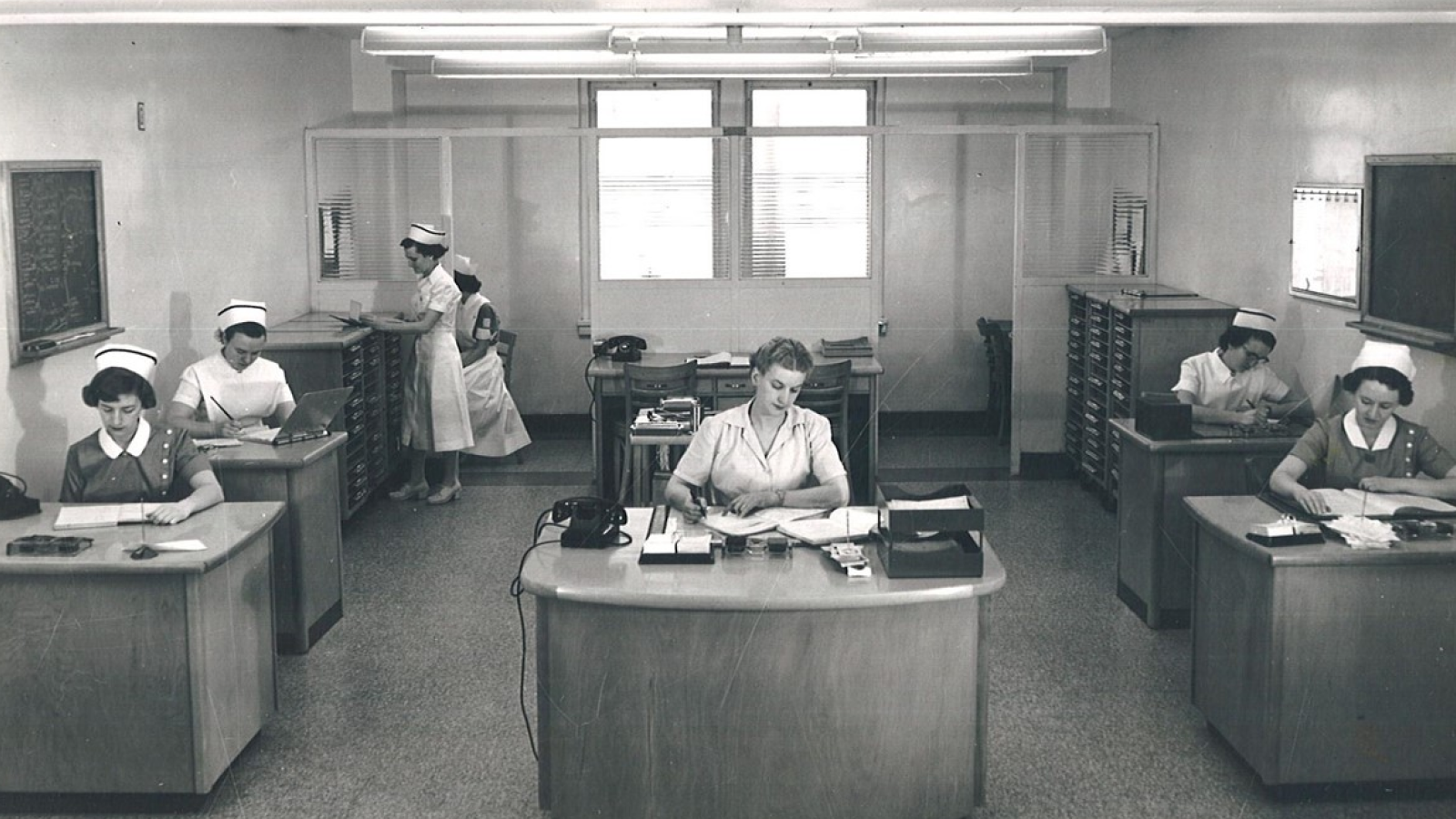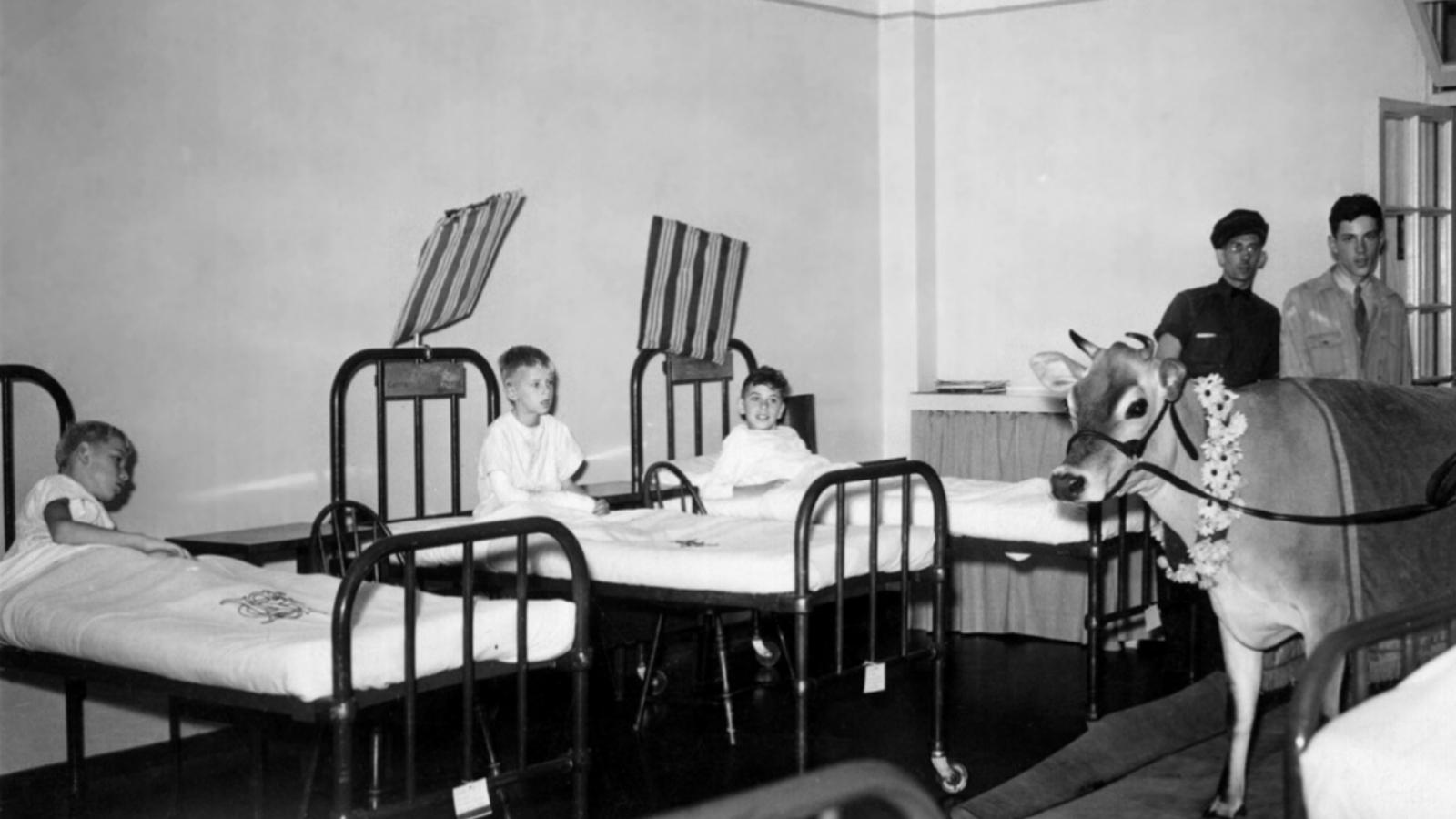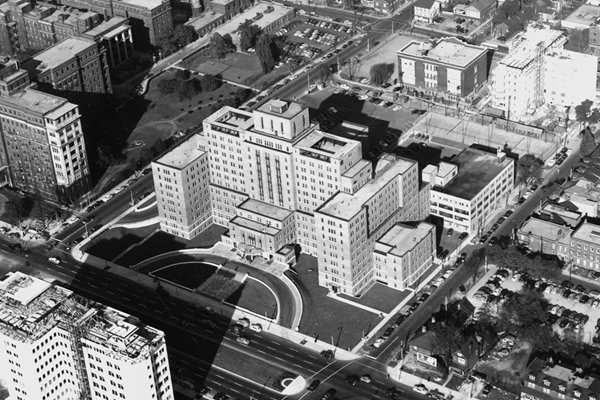
Care
Although paediatrics is considered a newer medical specialty, providing care for sick children is as old as healing itself. Ancient texts describe child health and development issues, but the first children’s hospital didn’t open until 1802 in Europe and then 1855 in the U.S.
Twenty years later came Canada’s first children’s hospital – The Hospital for Sick Children (SickKids) in Toronto – but that was still decades before the field of paediatrics gained recognition as a separate medical specialty with dedicated research and practice focused on children's health.
Like many great institutions SickKids came from humble beginnings, but it didn’t take long to make its mark in Canada and the world. The building of iron lungs to care for polio patients, providing life-saving and life-altering surgeries, early adoption of X-rays, and development of fortified foods are some of the hallmarks of an institution dedicated to healthier children, which would catapult SickKids to the top of the paediatric world.
Surgery
Surgical procedures are commonplace today but that certainly wasn’t the case in 1875. In our first year, only six surgeries were performed at SickKids. That number jumped to 200 in 1891 and 518 by 1906. We surpassed 12,500 surgeries in 2024. One of the most common conditions requiring surgery was club foot, when one or both feet are positioned down and inward. Club foot was among the most common surgeries at SickKids, and was held up high by the hospital as an example of how its service was helping children lead productive and healthy lives.

This two-page spread from the 1899-1900 SickKids Annual Report details cases of "club foot" treated at SickKids, which was one of the most common types of surgeries at the time.
Anesthesia
Anesthesia and surgery go hand-in-hand, but the risks associated with anesthetizing children were seen as high as the surgery itself. Early forms of anesthesia involved the use of ether, one of the first forms of general anesthetic. It was administered using a special mask, which could be intimidating for children and an obstacle to the completion of surgery. Today we provide patients and caregivers with detailed information about what to expect prior to surgery, and we also have therapeutic clowns to lighten the mood and reduce the stress.
Diagnostic imaging
Before X-rays there were Röntgen rays, which were named after the scientist who discovered them at the end of the 19th century. Being able to see beneath the skin was a game-changer in health care, and in 1896 SickKids became the first hospital in Toronto to have X-ray machines. Dr. Charles Dickson was the first X-ray specialist at SickKids (he had the dual titles of doctor and electrician). Unfortunately, he was also a victim of the unknown dangers of radiation. Although Dickson lost his sight, his disability powered his advocacy for the blind and led him to co-found another great institution: the Canadian National Institute for the Blind (CNIB).
Polio outbreak
During the 1937 outbreak SickKids treated 678 patients with polio compared to just 23 the year before. The numbers only tell part of the story. SickKids was ground zero, taking in children and treating them with “homemade” medical equipment, including the “iron lung” whole-body medical ventilator. As it wasn’t possible to procure this life-saving equipment from elsewhere, SickKids built more than 30 of the machines on site to save the lives of our own patients. Some were even sent to hospitals in Manitoba, Saskatchewan, Alberta, and as far as Colorado, to save children far beyond our walls. Other medical equipment SickKids constructed included small leg braces that could help treat patients with polio and other diseases.
Laboratory medicine
It’s impossible to provide the right care at the right time without knowing why a patient is ill. The growth of laboratories led to more jobs for laboratory technicians, a new type of hospital worker who is behind the scenes yet on the front lines of care. Many of these jobs were occupied by women, who did double duty in bacteriology and food preparation. SickKids has a massive Department of Laboratory Medicine today that consists of Clinical Biochemistry, Genome Diagnostics, Haematopathology, Microbiology, and Pathology.
Head mirror
Although the stethoscope is the tool most associated with doctors today, the head mirror was the original piece of equipment that distinguished doctors from everybody else. More often seen in old movies and cartoons, there was a time you wouldn’t catch physicians without a head mirror, which was used commonly for ear, nose and throat examinations. Pen lights are the norm nowadays.
Nursing uniforms
Before ID badges, nurses wore uniforms to set themselves apart from other roles at the hospital. The look of their uniforms and caps evolved over the decades. Originally inspired by nun’s outfits, they transformed into a symbol of a nurse’s training, dedication and status. That was until the 1970s, when nursing wear faded into obscurity as the trend toward casual and comfortable clothing took hold.

This nursing station (circa 1951) is an example of the modern amenities that came with moving to the new building at 555 University Avenue. Having their own desks, telephones, in/out tray, as well as the latest cap and uniform style, signaled the start of a new era for SickKids.
Rehabilitation
The creation of a “country branch” for SickKids stemmed from a need to care for children who no longer needed hospitalization but weren’t quite ready to return home. The Thistletown countryside location in Etobicoke operated for 30 years on 100 picturesque acres where children could continue their recovery with sunshine, clean air and healthy meals. Before the era of therapeutic clowns, the kids would also be entertained by special visitors, such as Elsie the Cow, a dairy brand mascot and popular cartoon character.

There's nothing like a celebrity visit to bring a smile to a sick patient and help them feel a little better. Among the famous callers at Thistletown was Elsie the Cow. Elsie began as a dairy-company mascot and went on to appear in cartoons and live-action.
Nutrition
In the 1920s, vitamins and foods fortified with vitamins became all the rage to prevent disease, notably rickets, which is characterized by weak or soft bones in children. SickKids had a hand in developing foods to prevent disease before it starts. While best known for the Pablum cereal, it was preceded by the “super-biscuit” in 1929. SickKids researchers struck a deal to commercialize a bread product “belonging to the essential or protective class of foods.” Because bread was relatively inexpensive, it was seen as a way to boost vitamin consumption across the population and proved popular with consumers.
Massage and gymnastics
A precursor to physiotherapy was the use of massage and gymnastics. The hospital employed a skilled masseuse to successfully treat children with infantile paralysis, rheumatism, and fractures and weakened muscles. In addition, an in-house gym had special equipment where children with spinal and other injuries went to instructor-led classes to receive therapy to improve their flexibility and movement.
Dentistry
The first dentist at SickKids was Dr. John G. Adams. He worked on staff from 1883 until 1890, and also provided free dental care to children and adults who couldn’t afford it for years. A dental clinic was established in 1902 followed by the Department of Dentistry in 1913. Today, our Dentistry Department specializes in sophisticated forms of dental care, including oral anomalies, dental caries and dental trauma.
Inpatient care
In 1894, our records show the average length of stay was more than 54 days, which is several times more than in 2024 (6.4 days). Staying in hospital is costly, but beyond that, children and caregivers prefer to heal at home when possible. That’s why we’ve developed programs like Connected Care, which helps to improve transitions from hospital to home and ensure patients and families don’t stay in the hospital longer than necessary.
Outpatient care
SickKids treated many more outpatients than inpatients in the beginning. In 1880, there were 617 outpatient cases compared to 66 patients who needed to be accommodated at the hospital. Today SickKids has more than 50 outpatient clinics, including Communication Disorders, which evolved from the original Speech Therapy clinic (pictured in the 1930s).
Emergency
When SickKids first opened, the entire hospital could be considered an Emergency Department. Our first patient, Maggie, was brought to SickKids for scalding after falling into a tub of hot water. It wasn’t until the 1960s that SickKids opened a dedicated section of the hospital called the Emergency Department for children needing urgent and emergent care.
Helipad
You might think a helipad comes standard with every hospital but that’s not the case. SickKids opened its helipad in 1972, almost a century after its founding. Our helipad, which saw a total of 234 landings in 2024, helps provide care to patients in remote communities, as well as other patients destined for care at neighbouring hospitals.

















